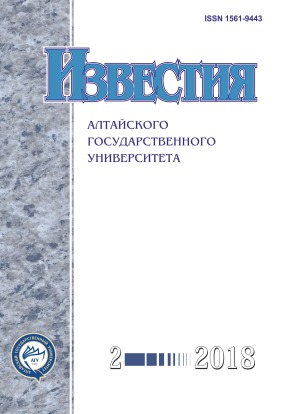Development of Demographic Processes in Kuzbass at the Turn of the 19th — 20th Centuries
Abstract
The problem of the development of demographic processes in Kuzbass at the turn of the 19th — 20th centuries is considered. During the specified period the essential growth of population in the region was stimulated by construction in the second half of the 1890s of the Central Siberian railroad; the Kolchuginskyaya branch in the middle of the second decade of the 20th century; and also state policy of peasants’ resettlement to Siberia. However, the population density in Kuzbass remained low. In the Trans-Siberian Railway area the number of residents of Mariinsk and the settlements at junction stations considerably grew. One more city, Taiga, appeared on the map of Kuzbass in 1911. From the beginning of active development of coal fields by Kopikuz, miners’ settlements were established; along the railway line numerous small settlements of railroad workers appeared. Against the background of powerful inflow to the village of peasants immigrants, the share of city dwellers (with a growth of their absolute number) constantly reduced. Certain changes happened in the class structure of the population: the number of noblemen reduced; the number of representatives of other estates (clergy, merchants, petty bourgeoisie, peasants, foreigners, etc.) had a steady tendency to growth.
DOI 10.14258/izvasu(2018)2-21
Downloads
Metrics
References
Горюшкин Л.М. Аграрные отношения в Сибири периода империализма (1900-1917 гг.). — Новосибирск, 1976.
Кабузан В.М. Заселение Сибири и Дальнего Востока в конце XVIII — начале XX в. (1795-1917 гг.) // История СССР. — 1979. — № 3.
Население Западной Сибири в ХХ в. / отв. ред. Н.Я. Гущин, В.А. Исупов. — Новосибирск, 1997.
Демографическая история Западной Сибири (конец XIX-XX вв.) / отв. ред. В.А. Исупов. — Новосибирск, 2017.
Белянин Д.Н. Столыпинская переселенческая политика в Томской губернии (1906-1914 гг.). — Кемерово, 2003.
Первая Всеобщая перепись населения Российской империи, 1897 г. Т. 79: Томская губерния. — СПб., 1904.
Памятная книжка Томской губернии на 1904 год. — Томск, 1904.
Памятная книжка Томской губернии на 1910 год. — Томск, 1910.
Памятная книжка Томской губернии на 1912 год. — Томск, 1912.
Памятная книжка Томской губернии на 1915 год. — Томск, 1915.
Государственный архив Томской области (ГАТО). — Ф. 3. — Оп. 40. — Д. 40.
Российский государственный исторический архив (РГИА). — Ф. 1276. — Оп. 17. — Д. 149.
Сибирская жизнь. — 1910. — № 197. — 4 сент.
ГАТО. — Ф. 3. — Оп. 19. — Д. 1781.
Полное собрание законов Российской империи (ПСЗРИ). 3-е собр. — Т. XXXI. — Отд. I. — № 34686.
Список населенных мест Томской губернии за 1911 г. — Томск, 1911.
ГАТО. — Ф. 3. — Оп. 23. — Д. 260.
История Кузбасса. Т. I. : С древнейших времен до 1917 года. — Кемерово, 1962.
Список населенных мест Томской губернии по данным позднейших переписей (1910, 1917 и 1920 гг.). — Томск, 1923.
Copyright (c) 2018 Н.М. Морозов

This work is licensed under a Creative Commons Attribution 4.0 International License.
Izvestiya of Altai State University is a golden publisher, as we allow self-archiving, but most importantly we are fully transparent about your rights.
Authors may present and discuss their findings ahead of publication: at biological or scientific conferences, on preprint servers, in public databases, and in blogs, wikis, tweets, and other informal communication channels.
Izvestiya of Altai State University allows authors to deposit manuscripts (currently under review or those for intended submission to Izvestiya of Altai State University) in non-commercial, pre-print servers such as ArXiv.
Authors who publish with this journal agree to the following terms:
- Authors retain copyright and grant the journal right of first publication with the work simultaneously licensed under a Creative Commons Attribution License (CC BY 4.0) that allows others to share the work with an acknowledgement of the work's authorship and initial publication in this journal.
- Authors are able to enter into separate, additional contractual arrangements for the non-exclusive distribution of the journal's published version of the work (e.g., post it to an institutional repository or publish it in a book), with an acknowledgement of its initial publication in this journal.
- Authors are permitted and encouraged to post their work online (e.g., in institutional repositories or on their website) prior to and during the submission process, as it can lead to productive exchanges, as well as earlier and greater citation of published work (See The Effect of Open Access).








